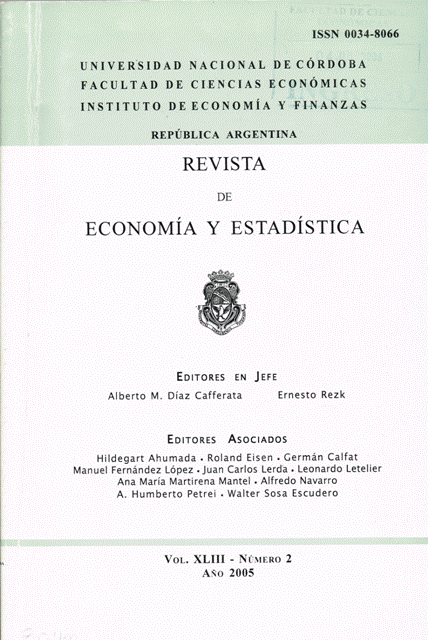Birth and Early History of Nonlinear Dynamics in Economics
DOI:
https://doi.org/10.55444/2451.7321.2005.v43.n2.3817Palabras clave:
nonlinear modelling, economic cycles, macrodynamics, endogeneous/exogenous fluctuations, history of thought 1930-1950Resumen
Since the 1980s, nonlinear dynamic modelling is becoming a popular methodology in economics. However, it is not as new as many researchers seem to believe. Before the linear approach dominated economic theory around the 1950s, many economists were actively involved in the development of nonlinear models, this tendency being particularly strong during the period 1930-1950. The main objective of this essay is to offer a systematic and comprehensive survey of the early developments in nonlinear dynamics in economics, ranging form Frisch’s original impulse and propagation model in 1933, to Goodwin’s formalisation of the limit cycle in 1951.
Descargas
Descargas
Publicado
Número
Sección
Licencia
Derechos de autor 2005 Eugenia Perona

Esta obra está bajo una licencia internacional Creative Commons Atribución-NoComercial-SinDerivadas 4.0.
Aquellos autores/as que tengan publicaciones con esta revista, aceptan los términos siguientes:
Los autores/as conservarán sus derechos de autor y garantizarán a la revista el derecho de primera publicación de su obra, el cuál estará simultáneamente sujeto a la Licencia Creative Commons Atribución-NoComercial-SinDerivar 4.0 Internacional que permite a terceros compartir la obra siempre que se indique su autor y su primera publicación esta revista.
Los autores/as podrán adoptar otros acuerdos de licencia no exclusiva de distribución de la versión de la obra publicada (p. ej.: depositarla en un archivo telemático institucional o publicarla en un volumen monográfico) siempre que se indique la publicación inicial en esta revista.
Se permite y recomienda a los autores/as difundir su obra a través de Internet (p. ej.: en archivos telemáticos institucionales o en su página web) antes y durante el proceso de envío, lo cual puede producir intercambios interesantes y aumentar las citas de la obra publicada. (Véase El efecto del acceso abierto)










